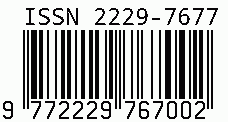
International Journal on Science and Technology
E-ISSN: 2229-7677
•
Impact Factor: 9.88
A Widely Indexed Open Access Peer Reviewed Multidisciplinary Bi-monthly Scholarly International Journal
Plagiarism is checked by the leading plagiarism checker
Call for Paper
Volume 16 Issue 4
October-December 2025
Indexing Partners



















The Role of AI in Detecting and Preventing Trademark Counterfeiting: Legal and Technological Perspectives from India and the U.S.A.
| Author(s) | Prof. Dr. SPS Shekhawat, Ms. Tarushi Gaur |
|---|---|
| Country | India |
| Abstract | The proliferation of trademark counterfeiting poses a severe threat to global commerce, consumer safety, and brand integrity. With the advent of Artificial Intelligence (AI), new tools have emerged that hold the potential to revolutionize the detection and prevention of counterfeit goods. This paper explores the legal and technological perspectives of using AI to combat trademark counterfeiting, with a comparative focus on India and the United States of America. In the U.S., advanced AI algorithms are increasingly deployed in supply chain monitoring, e-commerce surveillance, and image recognition to identify infringements, while India is gradually embracing AI technologies in IP enforcement through governmental and private initiatives. The study delves into how AI technologies—such as machine learning, deep learning, and natural language processing (NLP)—are being used to analyze product listings, logos, packaging, and customer reviews to detect fakes on online platforms in real-time. On the legal front, this research analyzes the legislative frameworks of both nations, highlighting the strengths of the Lanham Act in the U.S. and the Trade Marks Act, 1999 in India in addressing trademark infringement and counterfeiting. However, the integration of AI raises novel legal questions concerning data privacy, algorithmic accountability, and evidentiary admissibility in trademark litigation. The study also examines case law and policy developments reflecting each country’s approach to regulating AI-powered anti-counterfeiting technologies. While AI presents promising solutions, challenges persist in terms of implementation, cost, regulatory gaps, and cross-border coordination. This paper concludes by suggesting harmonized policy approaches, public-private collaborations, and legal reforms to strengthen the global response to trademark counterfeiting using AI. |
| Keywords | Artificial Intelligence, Trademark Counterfeiting, Intellectual Property Law, India, United States, Legal Technology |
| Published In | Volume 16, Issue 3, July-September 2025 |
| Published On | 2025-07-21 |
| DOI | https://doi.org/10.71097/IJSAT.v16.i3.7158 |
| Short DOI | https://doi.org/g9t2x4 |
Share this


CrossRef DOI is assigned to each research paper published in our journal.
IJSAT DOI prefix is
10.71097/IJSAT
Downloads
All research papers published on this website are licensed under Creative Commons Attribution-ShareAlike 4.0 International License, and all rights belong to their respective authors/researchers.

